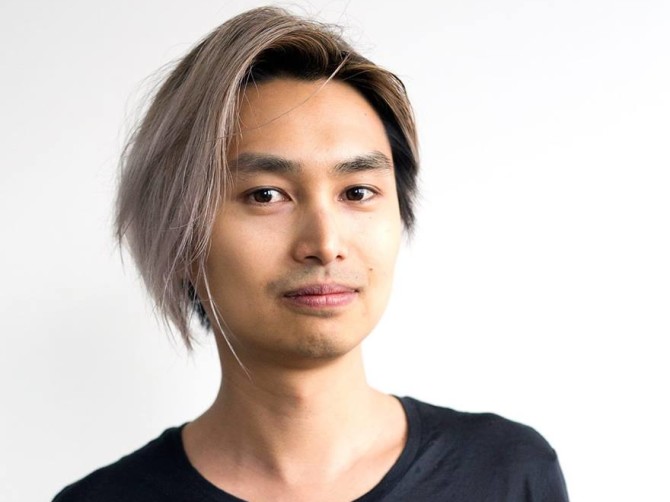Matt Huynh is an Australian-born New-York-based artist who illustrated Sam Chanse’s play Lydia’s Funeral Video. This week we got to interview him and ask about his creative processes and inspirations. Be sure to check out his artwork on his website and in Sam’s book!
Lydia’s Funeral Video is such a unique and innovative book-form collaboration—how did you, Sam Chanse, and Kaya Press come together to create this work?
I was introduced to Sam’s work and Kaya Press with my collaborators at the Spoon + Fork design studio. They have done some great work together on books and authors I admire, such as Ed Lin’s work, so I was excited to work together.
What was your creative process like for this project, and what were some of the challenges?
For this particular project, I worked through the text, taking notes and doodling in the margins. They start quite free, like a stream-of-consciousness. Sometimes they quite literally illustrate what is happening, but oftentimes I trust whatever emotional prompts and mental deviations the text gives me. I go back and see connections amongst all the ideas, and some subconscious feelings about the work that I can flesh out further with rounds of sketches. From these doodles, I build a sequence of illustrations that has an emotional arc to both complement and contribute to the source text.
Lydia’s Funeral Video is bold and political, addressing issues like abortion and multiracial identity, and your illustrations complemented the play’s voice in a thought-provoking way. I’m curious what you personally think of art and activism though, beyond this play—how much do you believe these realms should intersect?
I believe the power to engage activism with artwork has tremendous potential and potency. The leadership role of an artist is to be fearless—to say what we’re culturally, economically, socially, racially pressured not to say, whether through commercial pressures, what sells, catering to an audience, or shying away from what would be censored. Artists can represent the underrepresented people and ideas in our culture without waiting for permission, and entice audiences in surprising, novel, and challenging ways to empathize with characters and values that might not otherwise have a voice. Representation is a radical act, particularly for vulnerable and powerless segments of the community, who would otherwise have their stories told for them by mainstream media, political spin and corporate interests.
How did you become an artist? What first inspired you to tell stories visually?
I grew up on an unhealthy diet of American superhero comics that taught me the nuts and bolts of visual storytelling. I would take a biro directly to my favorite superheroes, tracing the weight of the cartoonist’s careful brushstroke to teach myself how to draw these powerful figures. This was a bit of a gateway to comics, writing, visual arts, animation and interactive storytelling.
Do you have any advice for young aspiring Asian-diasporic artists?
My advice to young Asian-diasporic artists is to tell their own stories, to pay attention to whatever their authentic truth is, not what they’re told it is. To be okay with not having neat answers, or the right answers, or any answers at all—but to keep questioning. And to find reward in the doing of the work itself.


Leave a Comment
We'd love to know what you think.